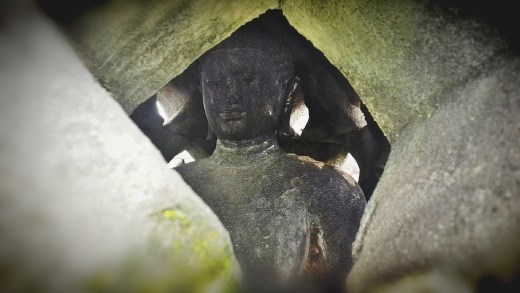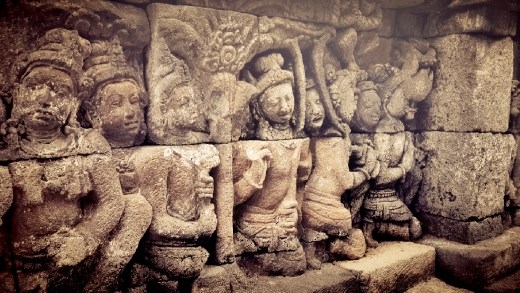
That was the second day, I started to get up early and be ready to the activity with new friends from Germany and Netherlands. The second day was scheduled to visit one of the world heritage sites, Borobudur.
Slightly citing information from wikipedia(dot)org and whc(dot)unesco(dot)org, Borobudur, or Barabudur, is a 9th-century Mahayana Buddhist Temple in Magelang, Central Java, Indonesia, and is about 42 km from Yogyakarta city. The monument consists of six square platforms topped by three circular platforms and is decorated with 2,672 relief panels and 504 Buddha statues. A main dome, located at the center of the top platform, is surrounded by 72 Buddha statues seated inside a perforated stupa. It is the world’s largest Buddhist temple, as well as one of the greatest Buddhist monuments in the world. Founded by a king of the Saliendra dynasty, it was built to honour the glory of both the Buddha and its founder, a true king Bodhisattva.

The name Borobudur is believed to have been derived from the Sanskrit words vihara Buddha uhr, meaning the Buddhist monastery on the hill. The archeological excavation into Borobudur during reconstruction suggests that adherents of Hinduism or a pre-Indic faith had already begun to erect a large structure on Borobudur's hill before the site was appropriated by Buddhists. The foundations are unlike any Hindu or Buddhist shrine structures, and therefore, the initial structure is considered more indigenous Javanese than Hindu or Buddhist.

That day we were accompanied by a local guide who was quite fluent in English. We were introduced and given very detailed information about Borobudur even the ashes around Borobudur as the impact of the Mount Kelud eruption on February 13, 2014. Bit of information that I quoted from the tempo(dot)co, the phenomenal explosive power of Kelud Mount, the burst sand and volcanic ashes was spreading to the region of West Java and this was being the size of this eruption awesomeness. In fact, due to the high intensity of volcanic ashes, some airports on Java Island was forced to cease operations.

Arriving at the main gate, we could already saw Borobudur as a whole. This masterpiece was very beautiful, slowly etched by time and the number of people who came to visit. Its beauty will fade one day may even be lost if not maintained and preserved.
We are also introduced to the drainage system in Borobudur. For info taken from the-marketeers(dot)com on June 11, 2012 the German Government and UNESCO was signing a cooperation agreement in the Ministry office of Education and Culture, which formally marking the continued collaboration of both parties in the conservation project of Borobudur World Heritage Sites. Two international conservation experts from Germany, Prof. Dr. Hans Leisen and Dr. Esther von-Plehwe Leisen who did the deep analysis in parts of the temple for 10 (ten) days and made a recommendation to continue the temple conservation project in order to maintain long-term preservation efforts. The background of the project "Save the Borobudur World Heritage Site" by the eruption of Merapi Mount, which began on October 26, 2010 has resulted in a large number of deaths and severe damage to the infrastructure around the Borobudur Temple. Temple area covered corrosive ashes layer thickness reaches 3 cm, which was threatening conditions temple rocks and drainage systems.

The beauty was not only from the distance but also closeness. The detailed arrangement of rocks as measured adds to the beauty of Borobudur. Detailed carvings has each story. The questions that I always think, "How did they do this? How they resolve so much detail? How many people do that?" So many questions about Borobudur that can only be answered when I (probably) have a time machine to come into the making of Borobudur.